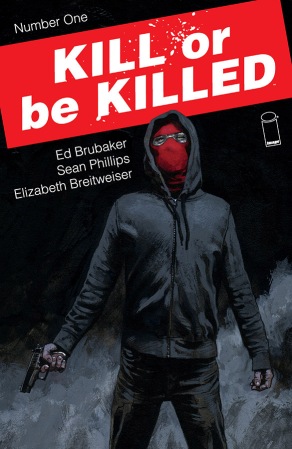 Irredeemable is a graphic novel by Mark Waid and Peter Krause. The credits list colorist Andrew Dalhouse, letterer Ed Dukeshire, editor Matt Gagnon, and designer Paul Azaceta. It was originally published in thirty-seven single-issue “comics” from April 2009 to May 2012. Volume 1 collects issues 1-4 and was released in October of 2009. Boom! Studios published the series.
Irredeemable is a graphic novel by Mark Waid and Peter Krause. The credits list colorist Andrew Dalhouse, letterer Ed Dukeshire, editor Matt Gagnon, and designer Paul Azaceta. It was originally published in thirty-seven single-issue “comics” from April 2009 to May 2012. Volume 1 collects issues 1-4 and was released in October of 2009. Boom! Studios published the series.
“When the Plutonian, the world’s greatest hero, snaps and turns into the world’s greatest villain, only his former teammates have a chance at stopping his rampage. But while on the run from the world’s most powerful and angry being, will these former teammates discover his secrets in time? How did he come to this? What became of the hope and promise once inside of him? What happens to the world when its savior betrays it? What makes a hero irredeemable?” — from the back cover
Lately, I have been carefully turning the blood-splattered and dark pages of a few graphic novel volumes that all explore some darker and badder themes. (i.e. Kill or be Killed, The Boys, etc.) Irredeemable is, for me, the most gripping. I am engaged in the story and enjoy reading the volume. This is different than when I read The Boys or Kill or be Killed, because with those I feel I am turning a more critical, clinical, analytical eye on them. But they do not engage me; at most, I think I am repulsed or disgusted. I’m kind of splashing around in the murk currently. That being said, there is plenty of comparison between these three works in that they all delve into the worst of the worst.
Irredeemable has a storyline that has been toyed with here and there in many places in any number of comics. However, Waid really takes the idea to the extreme in this series. The Plutonian is designed as a blonde-haired white chap who wears a red and white or, later, red and black superhero outfit. (You know what I mean by “outfit.” The usual onesie!)
The series starts off with the Plutonian seemingly cruelly terrorizing a superhero/supervillain’s home. The first few pages deliver the feeling of frantic, desperate attempts to flee and the deadpan cruelty of a super-powered individual. I like that the series starts in media res without any heads up warning. And these first few pages set the tone for the whole volume generally – a scrabbling, scrambling by everyone contrasted with the suddenness of the Plutonian.
Horribly shocking – emotionally, rather than just gore and splatter – in places. The abject helplessness of the citizens, the confusion and scattered attempts by the heroes, the suddenness and sourness of the Plutonian’s actions…all serve to make this work very gripping. The reader knows not much less than the participants of the story – why is this happening, what is going on? In chapter two, we are given a little more backstory – hints that a failed relationship with a female co-worker might be a catalyst for Plutonian’s rage. Secretly, though, I was (and am) hoping this is not the sole driving force in the story. It seems too pathetic for this level of character exploration. Even as chapter three begins, Waid complicates the former failed relationship even more – hinting at a situation involving Bette Noir (fellow hero teammate).
I like how Waid surprises the reader. For example, the Singapore event is sudden and layered in surprising actions by the characters. Even when the reader knows how much of a bad dude the Plutonian is, still Waid is able to surprise the reader – that’s some mighty good writing in any genre.
I also am intrigued by the character Qubit. He is interesting and seems to be a good juxtaposition against the Plutonian’s over-powered skillset. Lastly, Waid keeps a key element to the storyline teased, but never presented – whomever Modeus is and whatever their relevance is, readers will have to keep reading to find out. Qubit really seems to be desperate for locating Modeus, so it must be vital.
Not for the sensitive or faint of heart. There are acts here that one would call “massive evil.” The story is not one of happiness and even if good manages, somehow, to triumph like we all are comfortable with – too much destruction has occurred to call it a triumph.
3 stars
 Kill Or Be Killed is a “graphic novel” series that began in August 2016 and ended in June 2018. This work was originally published in twenty “comic issues” 40+ pages each. I read The tradeback version of volume 1 that was released in 2017. The series is a collaboration between creators Ed Brubaker and Sean Phillips. Creator Elizabeth Breitweiser’s work was nominated for the industry’s Eisner Award for best coloring. Volume one contains the first four issues of the series.
Kill Or Be Killed is a “graphic novel” series that began in August 2016 and ended in June 2018. This work was originally published in twenty “comic issues” 40+ pages each. I read The tradeback version of volume 1 that was released in 2017. The series is a collaboration between creators Ed Brubaker and Sean Phillips. Creator Elizabeth Breitweiser’s work was nominated for the industry’s Eisner Award for best coloring. Volume one contains the first four issues of the series.













